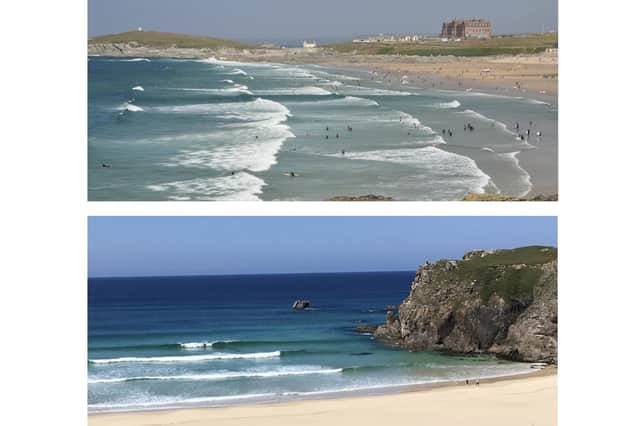Could underwater roads to the isles create a tidal wave of surf tourism?


What if there were tunnels linking some of Scotland’s islands to the mainland? That was the thought experiment embarked upon by Scotland Office minister Iain Stewart (Con) earlier this week, following a fact-finding visit to the Faroes, where they not only have tunnels joining up the dots of their North Atlantic archipelago, but are also able to bask in the collective glory of an underground roundabout. Mr Stewart suggested that tunnels should be considered a “viable” alternative to ferries and deemed them an idea “worth exploring.”
Of course, these thoughts have been thought before. In 2019, Western Isles MP Angus MacNeil (SNP) held talks with a Norwegian consultancy company concerning the potential of subsea tunnels linking the Outer Hebrides to the rest of Scotland. The company in question, Norconsult, which has overseen tunnel projects in both Norway and the Faroes, advised that a route between Harris and Skye would be the best option, with a possible additional link between Harris and North Uist.
Advertisement
Hide AdAdvertisement
Hide AdThen, in 2021, Transport Scotland raised the possibility of building a 17-mile tunnel between Rarnish on Benbecula and Neist Point on Skye. Such holes in the ground are a bit on the pricey side – the Rarnish-Neist Point link would apparently cost around £450 million – but politicians of all stripes at least seem open to the possibility that digging them might bring certain economic benefits, improve island residents’ access to healthcare and other services, and help prevent depopulation.
Meanwhile, from a tourism perspective, being able to drive direct from the mainland to the Isle of Lewis would make some of the best, most consistent surf spots in the UK easier to reach. If that sounds like a very minor point to raise, given all the other potential benefits under discussion, consider that according to the International Surfing Association (ISA), the world governing body for surfing, more than 35 million people now surf worldwide. Also consider that advances in wetsuit technology make the concept of surfing as a warm water, warm weather activity about as outdated as day-glo sun block. And consider too that a recent market overview of the ($4 billion) surf equipment industry from market research provider ReportLinker noted: “Surfing vacations hold tremendous potential and are likely to be a vital component of the global travel industry in the post Covid-19 period.”
Point being: there are a lot of surfers out there, a lot of them are prepared to travel in search of new, ideally uncrowded waves, and while beaches in the south-west of England and the west of France are now rammed with surfers, particularly during the summer months, the waves of the Western Isles remain so underexploited, even in the warmest months of the year, that they still frequently rumble through not just unridden, but unobserved.
Sure, the weather plays a part in keeping the crowds away: surfers spending a summer in Biarritz or Newquay tend to end up with all-over suntans, whereas on Lewis your typical surfer tan starts at the forehead and ends at the neck. Difficulty of access, though, must also be a factor.
Currently, according to Google Maps, the journey time from the centre of Edinburgh to the well-known surf spot of Eoropie on Lewis is – at best – seven hours 55 minutes, allowing for two hours 30 minutes on the ferry from Ullapool to Stornoway, plus check-in 45 minutes before departure. With only a couple of sailings a day, you might want to leave a bit of leeway for the Edinburgh to Ullapool drive, so let’s call it eight hours and 15 minutes to be on the safe side.
Making the same journey via a tunnel from Skye to Harris, you might expect the travel time to be reduced substantially, but the difference is not as big as you’d think. Angus MacNeil and Norconsult reportedly looked at various Skye-Harris tunnel options ranging from 25-35 miles in length, but for the sake of argument let’s say they went for a helpful one in this context, a 28-miler running from Uig on Skye to Tarbet on Harris. Via this route, the total travel time from Princes Street to Eoropie would be seven hours 31 minutes, assuming a 50mph limit in the tunnel, so a 33 minute subsea crossing.
Tunnels, then, might not make much difference to journey times from the population centres of the Central Belt, but they would certainly reduce costs. This July, a couple taking a car on the ferry from Ullapool to Stornoway and back would pay around £150. True, there would probably be a toll to pay on any tunnel, but it’s hard to imagine it could ever be more than a few quid.
So, would the advent of underwater roads to the isles see Lewis inundated with weekend surf trippers from the Central Belt? Probably not. But could cheaper access make the Western Isles more attractive to surfers looking to stay for a week or more? Absolutely – and there’s a potential market of 35 million and growing.
